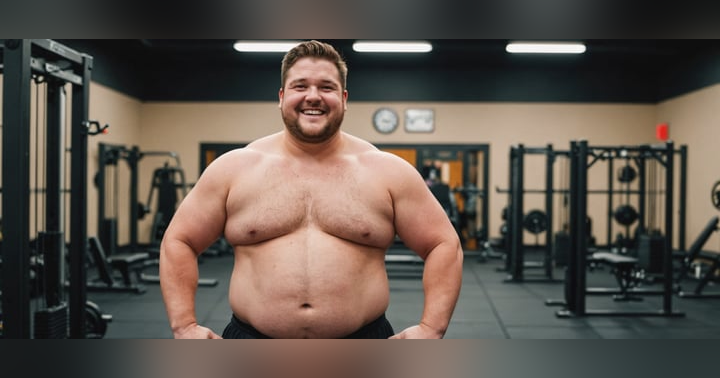The LGBTQ+ Panic Defense: A Threat to Our Safety and Equality

As If Being Gay Wasn’t Exhausting Enough
It’s no surprise that the LGBTQ+ community continues to grapple with significant challenges, including systemic discrimination, unequal legal protections, and social stigmas, all of which hinder full acceptance and equality.
However, an alarming issue that remains under-discussed is the use of the "gay panic defense" and "trans panic defense" in legal cases. These defenses, often grouped under the broader term "LGBTQ+ panic defense," are legal strategies that excuse or mitigate violent acts against members of the LGBTQ+ community by blaming the victim's sexual orientation or gender identity.
The fact that this defense is still allowed in many U.S. states should be a cause for concern for all of us, regardless of sexual orientation.
Understanding the LGBTQ+ Panic Defense
The American Bar Association defines the LGBTQ+ panic defense as a legal strategy that justifies violent behavior against LGBTQ+ individuals by claiming that the victim’s sexual orientation or gender identity provoked the defendant's actions. Essentially, it’s a framework that tries to argue that unwanted same-sex sexual advances drove the defendant to temporarily lose control, leading to violence, often with fatal consequences.
This defense is not only discriminatory but also deeply flawed. It relies on outdated and debunked psychological theories, such as the "homosexual panic disorder" that was once considered a mental illness but has long been discredited and removed from medical manuals. Despite this, the legal system has not kept pace with these advancements, and the panic defense remains a viable legal strategy in many places.
The History of the Panic Defense
The panic defense has its roots in the mid-19th century, linked to a mental disorder identified by psychiatrist Edward J. Kemp in 1920 called "homosexual panic." Kemp described it as a condition where individuals experienced panic due to their uncontrollable same-sex attractions. For some, this led to psychotic symptoms like hallucinations and delusions. Kemp proposed that a possible cause of this was from spending extensive amounts of time with members of the same sex in a confined or restricted environment.
However, it is important to note that the onset of this condition was not linked to unwanted sexual advances. Instead, Kemp indicated that it was actually triggered by the individual's own aroused homosexual desires. Although this disorder was about the individual’s internal struggle with their own sexuality rather than any external advances, it was later distorted.
The modern panic defense diverges significantly from its origins, suggesting that the presence of an LGBTQ+ individual or an unwanted advance is so provocative that it causes the defendant to temporarily lose control and justifiably commit a violent act.
How the Panic Defense is Used in Court
The LGBTQ+ Bar outlines three primary ways the panic defense is used in court to reduce a charge from murder to manslaughter or even justified homicide:
- Insanity or Diminished Capacity Defense: The defendant claims that a sexual proposition from the victim triggered a nervous breakdown, leading to an LGBTQ+ panic.
- Defense of Provocation: This allows the defendant to argue that the victim’s nonviolent sexual advance was so provocative that it led the defendant to attack the victim.
- Self-Defense: The defendant argues that they believed the victim, due to their sexual orientation or gender identity, was about to cause them serious bodily harm, justifying the use of excessive force.
Despite the absurdity of these arguments, juries have acquitted or reduced sentences for numerous defendants using this strategy. The results are tragic and highlight a systemic failure to protect the LGBTQ+ community.
Real-Life Cases and Alarming Statistics
The LGBTQ+ Bar Association has documented numerous cases where the panic defense has been used successfully.
In 1995, Scott Amedur appeared on the Jenny Jones Show as part of a segment on secret admirers, where he revealed his attraction to his friend, Jonathan Schmitz. Taken aback and embarrassed, Schmitz drove to Amedur's house three days later and fatally shot him twice in the chest. Schmitz claimed diminished capacity due to gay panic disorder, leading the jury to reduce his charge from premeditated murder to second-degree murder.
In 2001, Ahmed Dabarran was attacked and killed by Roderiqus Reshad Reed, who struck him over the head a dozen times. Reed's attorney argued self-defense due to Dabarran's alleged unwanted sexual advances, though the medical examiner testified that Dabarran was asleep during the attack. Despite this and Reed's confession, the jury acquitted Reed of murder.
In 2008, Joseph Biederman stabbed his neighbor, Terrance Hauser, 61 times, claiming he acted in self-defense after waking up to Hauser holding a sword against his neck and attempting sexual assault. Biederman asserted that his panic led him to stab Hauser multiple times. Despite the excessive nature of the attack and evidence showing few signs of a struggle, Biederman was acquitted of first-degree murder.
More recently, in 2015, Daniel Spencer was murdered by his neighbor Robert Miller, who claimed self-defense after rejecting a sexual advance from Spencer. However, physical evidence contradicted Miller's claim of being in danger. Miller’s conviction was reduced from murder to criminally negligent manslaughter.
These cases are not isolated incidents. LGBTQ+ individuals are significantly more likely to be victims of violent crime. A study published in October 2020 found that LGBTQ+ people are four times more likely to experience violent victimization compared to their straight counterparts. The LGBTQ+ community faced about 71 violent victimizations per 1,000 people annually, compared to 19 per 1,000 for straight people.
Lack of Federal Protections
Adding to the concern is the fact that there are no federal laws prohibiting the use of the LGBTQ+ panic defense. Although efforts have been made, such as introducing the Gay and Trans Panic Defense Prohibition Act in Congress, these bills have failed to pass, leaving protections up to individual states.
Currently, only 21 states and the District of Columbia have banned the use of this defense. Meanwhile, many other states have introduced legislation but have yet to pass it. This patchwork of protections means that LGBTQ+ individuals in many parts of the country remain vulnerable to this deeply unjust legal strategy.
What Can We Do?
The continued existence of the LGBTQ+ panic defense underscores the need for action. We must educate ourselves and others about this issue, advocate for legal reforms, and support organizations that are working to protect the LGBTQ+ community.
Here are some steps you can take:
- Spread Awareness: Share information about the LGBTQ+ panic defense with your friends, family, and community. Many people, even within the LGBTQ+ community, may not be aware of this issue.
- Contact Your Elected Officials: Use resources like usa.gov/elected-officials to find your representatives and urge them to support legislation that bans the use of the panic defense.
- Support LGBTQ+ Organizations: Engage with and support organizations such as the LGBTQ+ Bar Association and the American Bar Association's Commission on Sexual Orientation and Gender Identity, which are actively working to end the use of this defense.
Building a Safer World
The LGBTQ+ panic defense is a glaring example of how discrimination continues to be codified into law. It not only legitimizes violence against our community but also perpetuates the idea that our lives are worth less than others.
We have the ability to drive change, but we can't do it alone. We need to unite, amplify our voices, and advocate for change. By engaging our allies within and beyond the LGBTQ+ community, we can work together to build a safer, more equitable world for all.
And remember. Every day is all we have, so you've got to make your own happiness.
For more information on this topic, listen to Episode 06. Gay Panic Defense.
Tune into your favorite podcast player every Tuesday for new episodes of A Jaded Gay.


















